
Maintenance Services Electrical - News & Information
Part P of the Building Regulations
Many people don’t realise that, since 2005, domestic electrical work in England must meet the requirements of Part P of the Building Regulations, even when it isn’t covered by your local Building Control department.
This rule helps to keep people safe from electrical hazards at home. It applies to new houses and to alterations or additions in existing properties, including full or partial rewires.
Enforcement of Part P
In a nutshell, domestic electrical work must be designed and installed to protect people from fire and injury, including electric shocks. It applies not only to people living in the property, but to anyone who might visit too.
As a homeowner or landlord you must be able to prove that any electrical work meets these requirements, or you will be committing a criminal offence. If work doesn’t meet the Building Regulations requirements local authorities can insist that it is altered or removed.
Types of electrical work covered by Part P
Electrical work at home or in its surroundings, such as gardens, sheds and garages, is covered if it includes:
installing a new circuit, even if it is low voltage (typically 230V)
replacing a consumer unit (or old-fashioned fusebox)
alterations or additions to an existing circuit in ‘special locations’ close to baths or showers (within 600mm), and anywhere with a swimming pool or a sauna heater.
What to do if you’re planning electrical work at home
First, you should check whether the work is covered by Part P. If it is, you should employ an electrician who is registered with one of the Government-approved schemes, or make sure you or any non-registered electrician uses a registered third-party certifier. You should tell your local authority Building Control department before you start work.
Safe electrical installations
Electrical work in your home should meet the UK’s national standard, BS7671. If you work with a registered electrician, they can certify their work.
They will provide an Electrical Installation Certificate or Minor Electrical Installation Works Certificate that confirms the work meets the standard.
They will also provide a Building Regulations Compliance Certificate that confirms the work meets the requirements.
Work completed by people who aren’t registered electricians
If you or someone who isn’t registered as a competent person does the work, a registered third-party certifier should be notified in advance and contacted within five days of the work being completed.
The certifier will carry out electrical inspection and testing so that they can complete either an Electrical Installation Condition Report (based on BS 7671) or provide a report specifically covering the requirements of Part P. They will give their report to you.
You can use the Electrical Safety First website to find a local registered electrician.
If you are planning any electrical work in your home, we will be happy to give you advice; just give us a call.
Lighting manufacturers reduce plastic waste
22/05/20
Over the last year one lighting manufacturer has reduced its plastic waste, saving the equivalent of more than half a million plastic bags.
UK-based independent manufacturer, Tamlite Lighting, says its campaign to reduce plastic in its processes has saved around 10,000kg of plastic waste in a single year.
Plastic savings thanks to a circular economy strategy
The savings have been achieved as part of the company’s ‘circular economy’ strategy that aims to reduce waste and emissions. It includes using alternative sustainable packaging materials, such as recycled or shredded cardboard.
Plastic packaging has also been removed from some products, including LED batten and flat panel lighting ranges. In these high-volume product areas savings can soon build up. The company is also taking steps to make new products that are plastic free, including its new downlights.
Lighting manufacturers protecting the environment
The company understands that there is worldwide shift in attitude towards tackling climate change and protecting natural resources. That’s why it has taken positive steps to change operations and processes to help reduce its impact on the environment.
While they have long-standing commitment to recycling, they also plan to remove any non-essential plastic and other non-recyclable materials in their manufacturing processes as well as their products.

Recycling lighting
Recolight was established by the UK lighting industry in 2005 to operate a Waste Electrical and Electronic Equipment (WEEE) Compliance Scheme on behalf of the UK’s lamp producers.
It has the largest UK network of recycling drop-off locations for all lighting products included in the WEEE scheme. It’s for consumers and small amounts of business waste.
The Recolight interactive map helps you to search over 2000 free drop-off points to find the one closest to you. You can select sites by their function; commercial - both small amounts of business waste or electromagnetic radiation (EMR) luminaires - as well as local recycling centres and drop-off points for low energy light bulbs.
Contact us to find out more about energy saving LED lighting.

You might already have a home office but seven out of 10 people currently working from home are doing it for the first time due to the current circumstances.
The safety charity, Electrical Safety First (ESF), has raised concerns that home office environments could be overloading sockets, daisy-chaining and using charging devices in unsafe ways.
Research conducted at the end of March by ESF involved 3,000 employed adults across the UK, all currently working from home. The charity found more than two thirds of people currently working from home are using extension leads or adaptors for their electronal devices. Four in 10 said they have more appliances plugged into a single adapter than they usually would do and admitted to ‘daisy-chaining’ them together.
The National Fire Chiefs Council (NFCC) says that temporary home offices and new ways of working could increase the risk of electrical fires. Fire services are recommending that you make sure your smoke alarms are working and that you have an escape plan in case there is a fire.
How safe is your home office?
09/04/20
Here are some things you might like to think about for your home office set up.
Overloading - one in three of the people surveyed by ESF said they didn’t really know the fire risks caused by overloading plug sockets or how to check. ESF recommends their Socket Overload Calculator to check that you’re not plugging too many appliances in at once.
Daisy-chaining - this involves plugging one extension cable into another so that you can use your equipment further away from a plug socket or so that you can plug in more electrical items. This shouldn’t be done because, while the fuses in your socket and extension cable are designed to fail if the electrical load is too much, this might not always happen. If the circuit is overloaded an electrical fire can be caused.
Bedding - more than half of those surveyed said that they have charged electrical items such as a laptop or phone on their bed. They can overheat while they are charging causing a fire risk, so they should only be recharged on a hard, non-flammable surface.
Top five tips on working safely from home:
Don’t charge electrical items on beds. Always charge them on a hard, flat, non-flammable surface.
Avoid overloading sockets and extension leads.
Sit closer to a plug socket rather than daisy-chaining extension cables.
Even if your workstation is small, keep it tidy and keep drinks away from electrical items.
Make sure electrical cables are in good condition and that they are safely positioned to avoid trips and falls.
If this is the first time you have worked from home, take care not to become distracted by emails or work calls when you are cooking or taking care of children. This can lead to fires and accidents.
Please contact us if you would like any advice about the electrical safety of your home working set up.
Landlords: Guidance on repairs
02/04/20
The government published guidance for landlords and tenants setting out new responsibilities and rights during the coronavirus outbreak. It includes health and safety obligations while the current Covid-19 measures are in place.
It emphasises that landlords’ responsibilities remain the same and that tenants still have a right to a warm and safe place to live.
However, it also says that landlords should take a common-sense approach to non-urgent issues and acknowledges that routine inspections might not take place until the restrictions are lifted.
While local authorities are advised to take a pragmatic approach to enforcement at the moment, people’s safety is still the priority.
It’s recommended that properties should only be accessed for serious and urgent issues that could put health or safety at risk.
Urgent issues might include situations where:
heating or hot water is unavailable
fire alarms are faulty or not working
security equipment isn’t working
lighting throughout the property has failed
equipment that a vulnerable or disabled person relies on is broken.

We will continue to provide support for emergency electrical problems.
Inshedible!
17/03/20
Here’s a nice garden shed project we completed recently. If you want to run power to your shed, garage, garden office or other outdoor buildings, here are a few things to think about.
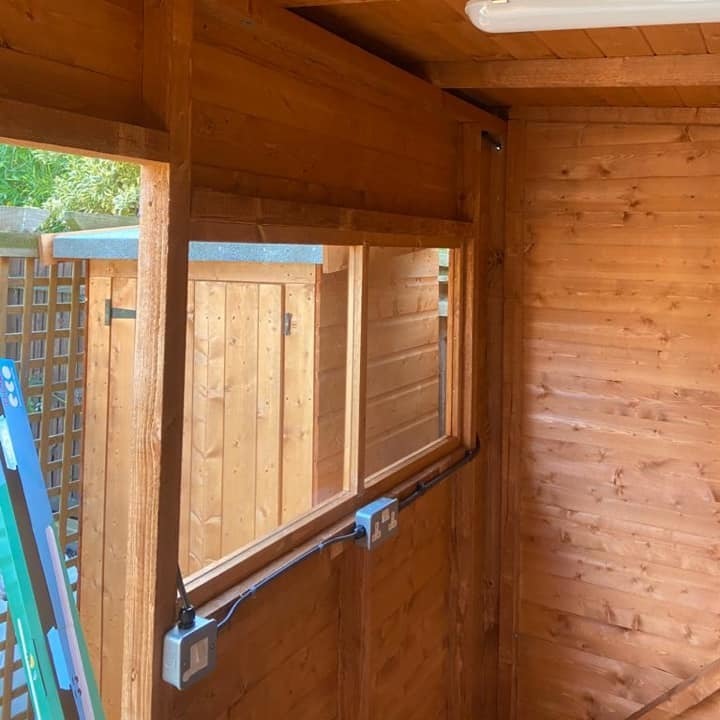
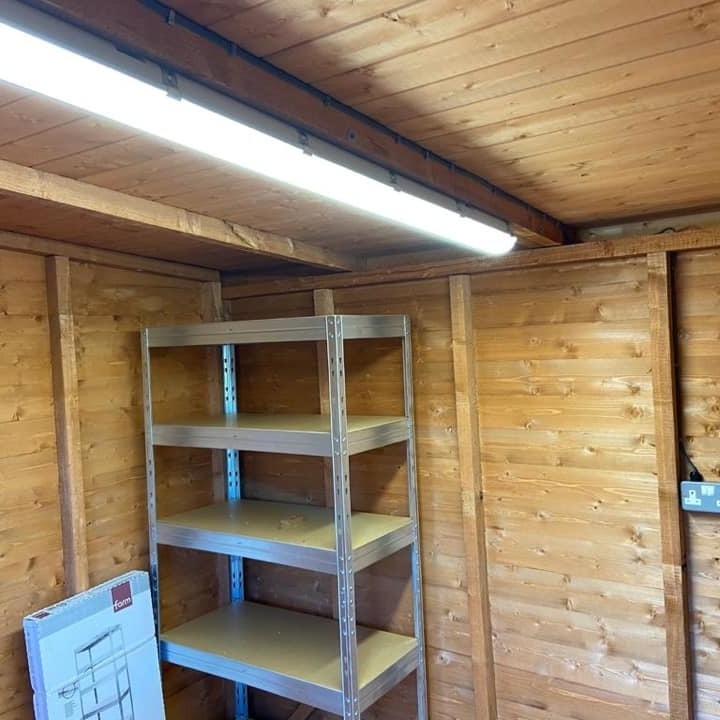
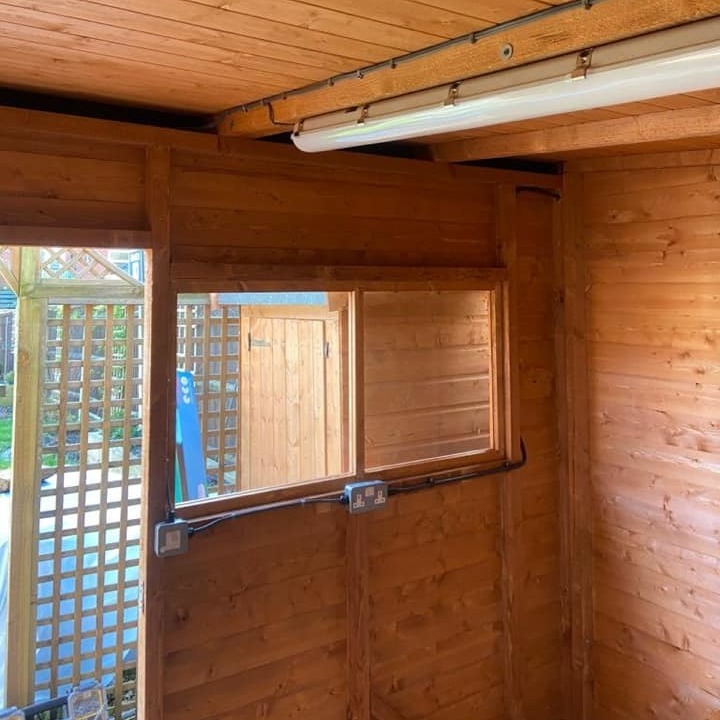
If you are using your garden buildings throughout the year you will want to install electrics for heating, lighting, and power.
If possible, your electrical requirements should be planned during the design and installation of your garden building because it this will make the process much easier.
You will need to think about wiring and installation of sockets and switches and getting your electricity supply from your house to the garden building.
Installing the power from your house to the garden building should be done by a qualified electrician who has the technical expertise to complete the calculations and installation to meet the requirements of Part P of the Building Regulations.
Normally you will need an armoured cable buried underground and connected through a consumer unit.
To help keep costs down you can dig the trench yourself to run the cable from your house to your garden building. I which will normally need to be 600mm deep. Make sure you discuss with your electrician at the quotation stage.
Your consumer unit in the house might need to be upgraded to handle the additional power requirements and a residual current device (RCD) might need to be added for extra safety.
The cable will be connected to your home electricity supply, laid in the trench and then connected to the new consumer unit in your garden building. Then sockets, lighting and heating can be safely installed.
A qualified electrician can certify their own work as a ‘competent person’ using a BS 7671 electrical installation certificate and you will be given a copy. If you want to sell your house later, it will be important to have this certificate to show that the work was properly completed.
If you are planning a new garden building or would like to make your shed or garage a more usable space, we will be happy to give you some advice, so please get in touch.

Trustmark monitors ECO measures
28/02/20
Under the Energy Companies Obligation (ECO),energy suppliers must monitor measures installed at people’s homes to make sure that standards are met and that energy efficiency improvements are accurately scored. The amended ECO3 obligations aim to improve quality standards across the energy sector and give consumers more confidence and protection when having work carried out at home.
Concerns over consistency
There has been criticism that the processes used by energy suppliers have been based on interpretations of these requirements, leading to variable results.
As a result, TrustMark has taken over administration of technical monitoring from Ofgem. TrustMark, a Government Endorsed Quality Scheme, is responsible for the technical monitoring process and for conducting score monitoring inspections.
From 1 January this year, their Framework Operating Requirements say that all installations, as a minimum, must provide two years of financial protection cover and be approved by TrustMark. There’s a three-month transitional period during which TrustMark will monitor results.
To ensure a consistent standard across the industry, TrustMark has teamed up with Bierce Surveying. A pilot project will assess technical monitoring standards for retrofitting homes for improved energy efficiency (PAS2035:2019). They are planning to recommend best practices and to create a new framework for delivery and monitoring for 2021.
Consumer confidence
Homeowners rely on experts to make sure that high standards of installation are provided, and energy efficiency improvements are accurately scored. The new frameworks aim to minimise inconsistencies and increase confidence in the quality of work provided.
We are always happy to discuss your home energy efficiency requirements, so please get in touch.
Hot stuff!
20/02/20
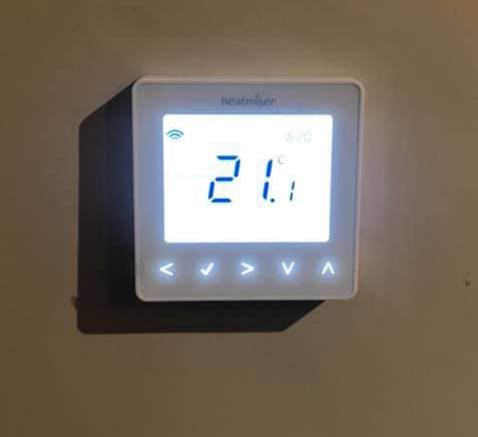
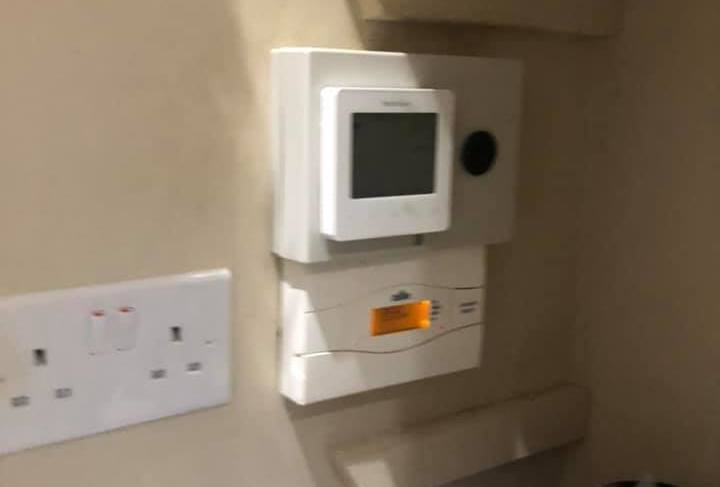
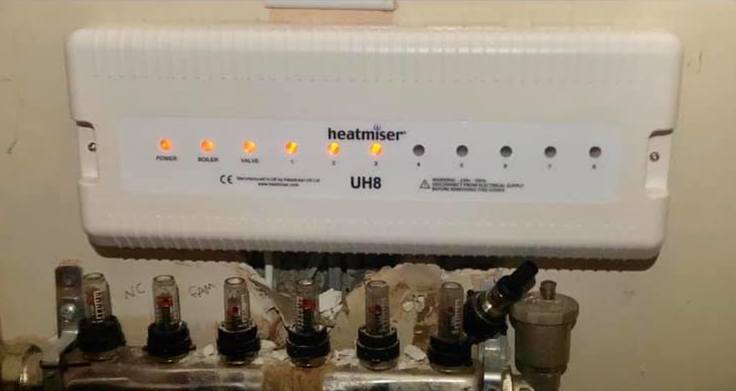
This is one of our favourite recent projects using Heatmiser products, which we think are excellent. Here seven thermostats and two manifold positions were connected online to allow our customers to fully control their underfloor heating zones using their smart phones. Very easy and very clever.
Consumer control
Back in December 2016, the Government consulted on a range of policy ideas known as ‘Boiler Plus’. The plan was to give consumers more choice about how to heat their homes and more control over their energy bills.
The ‘Boiler Plus’ standards came into effect from April 2018, requiring new home gas and oil boiler installations in England to include devices to programme the system to come on and off at set times, and to set the most comfortable temperature.
One of the following additional energy efficiency measures is required.
Flue Gas Heat Recovery Systems (FGHRS) - these recover heat from waste flue gases and use it to preheat cold water entering the boiler to reduce the energy needed to warm the water.
Weather Compensation - modern condensing boilers work best when the heating system runs at lower temperatures, but in many cases the operating temperature is set too high, so the boiler never works in condensing mode. Weather compensation works with the boiler to intelligently reduce water temperatures, increasing efficiency while still providing a comfortable environment.
Load Compensation - by measuring the difference between the inside temperature and the temperature set by the user, these devices modulate the boiler so that it only uses as much fuel as necessary to reach the target.
Smart Controls with Automation and Optimisation Functions - smart thermostats let consumers remotely control their home temperature using a tablet, smartphone or desktop for greater control over their heating system, just like the one we installed.
Smart controls offering either load compensation or weather compensation would be fully compliant with the Boiler Plus standard. Other types of smart thermostat would also meet the standard as long as they offer both automation and optimisation.
Automation allows devices to automatically control the heating system through programming or detectors that respond when people are present. Advanced examples detect where householders are, using sensor data or geolocation based on smart phone data, for example. This can make sure that the system only operates when it’s needed. If you are away for a long time the heating can be switched off remotely or automatically.
Optimisation devices can calculate how long it takes the property to reach a comfortable temperature, and time the system’s operation to minimise energy use.
If you are planning a new home heating system, we are always happy to discuss the electrical requirements with your installer. Please get in touch.
2019 – the cleanest year on record for electrical energy
28/01/20
According to the National Grid, more zero-carbon electricity was used across Britain last year than electricity produced using fossil fuels.
The National Grid owns and operates the electricity network in England and Wales, and also runs the Scottish networks.
The figures
The country is now halfway to the target date set in 1990 to achieve at least a 100% net reduction in greenhouse gas emissions by 2050.
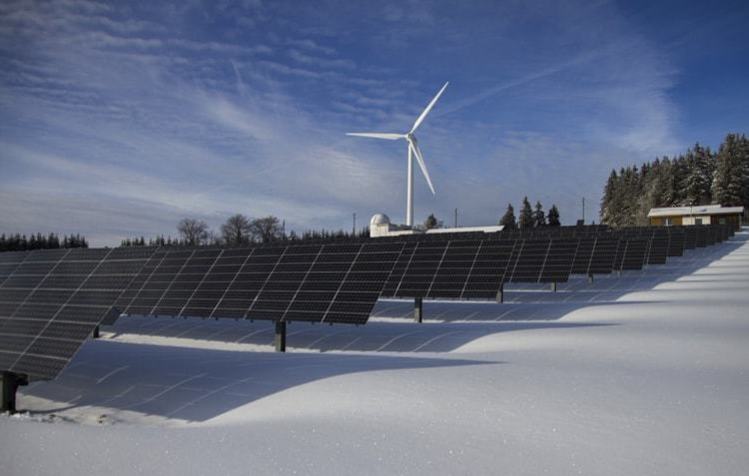
The latest information shows that wind farms, solar and nuclear energy, alongside energy imported by subsea cables, delivered 48.5% of our electricity. This compares to 43% generated by fossil fuels – coal, gas, and other carbon-based sources such as oil and diesel. The remaining 8.5% was generated by biomass materials such as wood pellets.
Are we making zero-carbon progress?
In 2010, fossil fuels were used to generate more than three-quarters of our electricity, while zero-carbon sources delivered less than a quarter.
Now, coal plants that once provided almost a third of our electricity contribute less than 2%. In fact, in May and June last year we went without coal-powered electricity for 18 days. By the end of this year we will have only four coal fired power plants.
We are also making a lot of progress with wind farms, solar panels and hydro power, which now generate just over a quarter of our electricity, compared with just 2.3% in 1990.
However, more than 38% of our electricity is generated using gas; a big increase on 1990 figures.
Alternative electricity sources
Our offshore wind projects now generate more electricity than onshore. On one day in December 45% of our electricity came from wind farms.
At the end of last year, the National Grid said it will be investing almost £10bn in the UK’s gas and electricity networks over the next five years. Almost £1bn has been allocated to move us to a net zero carbon electricity system by 2025.
Another £85m will help us to change the way we heat our homes, moving from gas boilers to things like electric heat pumps and hydrogen boilers.
If you would like to discuss energy-saving options for your business or home, please get in touch.

Electrical installation, inspection and testing regulations for private landlords
20/01/20
The Electrical Safety Standards in the Private Rented Sector (England) Regulations 2020 are now making their way through the Houses of Parliament.
Once approved, they will mean that private landlords and their agents must make sure that electrical installation inspections and testing are carried out for all new tenancies in England from 1 July 2020 and for existing tenancies from 1 April 2021.
Every fixed electrical installation will need to be inspected and tested at least every five years by a qualified professional. The Regulations, which include houses in multiple occupation (HMOs), say that a landlord must give a copy of the report to each tenant within 28 days and keep a copy themselves. They must also provide the report to whoever carries out the next inspection.
Other requirements:
• If the local housing authority asks for a copy of the report it must be provided within seven days.
• Any new tenant can ask for a copy of the last report before moving in.
• If a prospective tenant asks for a copy, it must be provided within 28 days.
Local housing authorities will enforce the rules and will have the powers to take action, including making repairs themselves. Each breach of the new Regulations could lead to a penalty of up to £30,000.
Who is a ‘qualified person’?
The Regulations say that a ‘qualified person’ must carry out the inspection. They must be competent to complete the inspection and testing and any further investigations or repairs needed to meet electrical safety standards.
Putting things right
If the inspection highlights an existing or potential fault the landlord must either investigate it further or repair it within 28 days, or sooner if required in the report.
Following further investigations or repairs, the landlord must keep written confirmation of what has been done and that electrical safety standards are met, or what further work will be needed. This will continue until the property meets the required standards.
Confirmation that the work has been done must be given to each existing tenant within 28 days, along with the original report that identified what was needed.
If you have any concerns about electrical safety, it’s important to have a professional inspection. Please get in touch.




